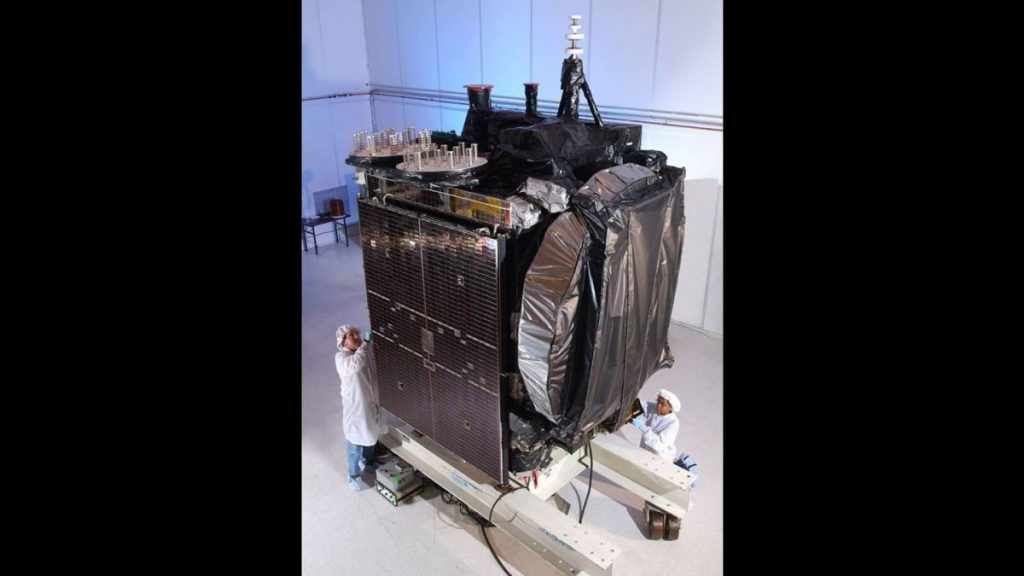International satellite services firm Intelsat has lost control of one of its satellites after it was presumably disabled by space weather.
Intelsat is attempting to regain control of the Galaxy 15 broadcast satellite after a disruption on Friday (Aug. 19). Intelsat said that a geomagnetic storm likely “knocked out onboard electronics needed to communicate with the satellite,” according to a report from Spacenews.com (opens in new tab).
“The satellite is otherwise operating nominally, keeping Earth pointing with all payload operations nominal,” Intelsat spokesperson Melissa Longo said in the report. Longo added that the company is offloading Galaxy 15 customers onto other satellites, after which it will “continue to try to regain command once they are off so we can eventually deorbit it.”
Galaxy 15 operates in a geostationary orbit at an inclination of 133 degrees west, providing media coverage to the Americas, according to Intelsat (opens in new tab). The satellite was built by Orbital Sciences Corporation (later acquired by Northrop Grumman) and launched in 2005.
This isn’t the first time that Intelsat has lost control of Galaxy 15. In 2010, the company lost contact with the satellite for over eight months before it finally began accepting commands from Intelsat’s control center after its batteries fully drained and prompted a reset.
The U.S. National Oceanic and Atmospheric Administration (NOAA) issued a warning (opens in new tab) on Aug. 16 about a category G3 geomagnetic storm, writing that “impacts to our technology from a G3 storm are usually minimal.” The storm was powerful enough to generate dazzling auroras around the world.
Most geomagnetic storms are harmless, although intense storms can disrupt radio transmission or damage power lines and other electrical infrastructure in addition to satellites. Throughout 2022, a hotbed of solar activity has generated many large solar flares and coronal mass ejections (CMEs), suggesting that the sun is “waking up” from a more dormant phase of its 11-year cycle of activity.
Some space weather experts have forecasted that the current cycle could be one of the strongest solar cycles in recorded history, although there is room for debate as our current understanding of the sun’s behaviors is still limited.
Follow Brett on Twitter at @bretttingley (opens in new tab). Follow us on Twitter @Spacedotcom (opens in new tab) or on Facebook (opens in new tab).

